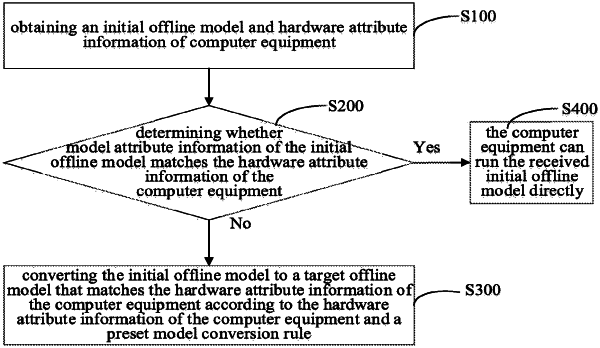| CPC G06F 9/3004 (2013.01) [G06F 8/35 (2013.01); G06F 9/44505 (2013.01); G06N 3/08 (2013.01); G06N 20/00 (2019.01)] | 20 Claims |

|
1. A model conversion method, the method comprising:
obtaining, by an input/output (I/O) interface of a computer system, an initial offline model, wherein the initial offline model is obtained by compiling an original neural network, and the initial offline model includes network weights and instructions of converted from respective compute nodes in the original neural network;
determining, by a processor of the computer system, whether model attributes of the initial offline model match a plurality of hardware attributes of the computer system; and
converting, by the processor, the network weights and the instructions included in the initial offline model to generate a target offline model based on the determination that the model attributes of the initial offline model do not match the plurality of hardware attributes of the computer system; wherein the processor is capable of executing the target offline model to implement a corresponding artificial intelligence application.
|